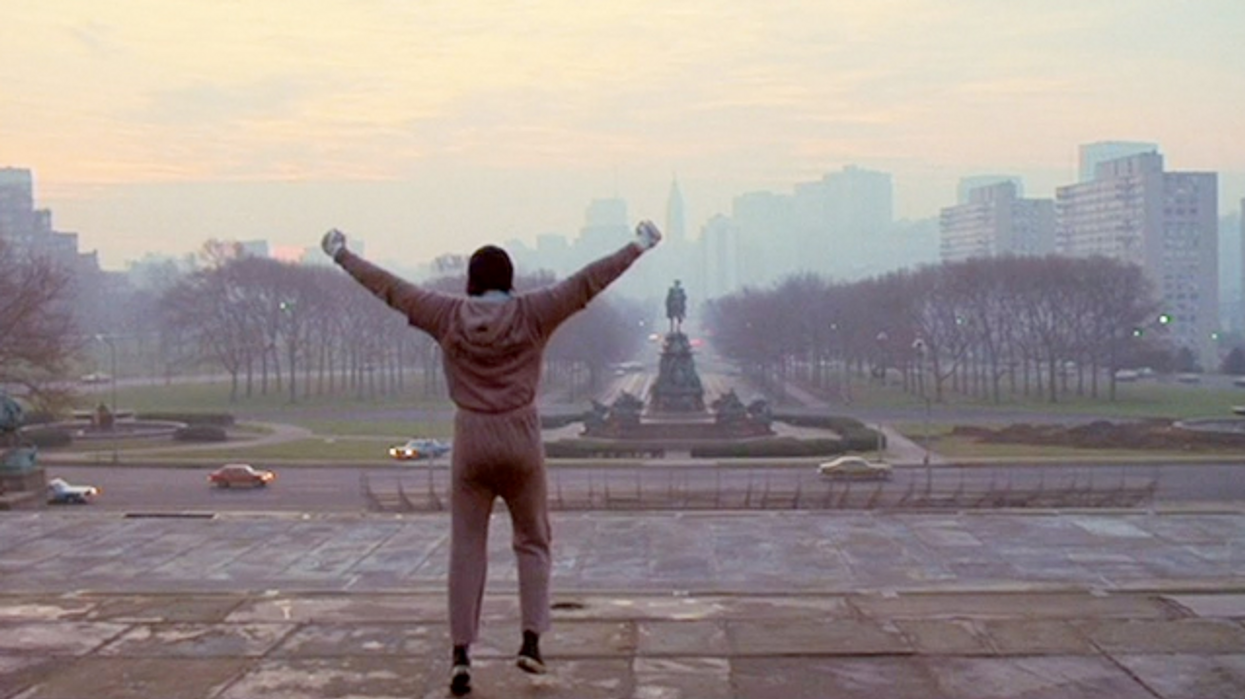What is an 'Obligatory Scene' in Film and TV?
We go over the definition and examples of this screenwriting maxim.

Rocky
One of the things I love about writing is that once you decide what genre you're working in, you get to sit down and watch a ton of movies and TV shows in that genre and call it research.
This binge is one of the most important parts of my process because it helps reveal to me the obligatory scenes that should be in the piece I'm writing.
But what does that mean? And how can that be useful?
This article delves into the definition of an obligatory scene, its significance in storytelling, and provides examples from films to illustrate its pivotal role in narrative success.
Let's dive in together.
Definition of an 'Obligatory Scene'

The Dark Knight Rises
Warner Bros.
An obligatory scene, often referred to as the "must-have moment", is a scene that the audience expects to see, based on the progression of the narrative and the genre conventions or tropes.
You're writing to fulfill the promises of the genre, even if you plan on subverting them.
These scenes are critical because they fulfill the emotional and logical expectations created by the preceding narrative threads and character arcs.
Significance of Obligatory Scenes

500 Days of Summer
Searchlight
Not only does finding these scenes make your job as a writer easier, but they also make you more creative. You have set ideas you can spin into great scenes with your own personal spin on them.
You can draw out themes and motifs with them.
And you can avoid the mistakes you see in lesser films.
The importance of obligatory scenes cannot be overstated. Here are several key purposes in storytelling that obligatory scenes fulfill:
- Fulfill of Expectations: Obligatory scenes satisfy the audience's built-up anticipation for a specific confrontation or resolution. Failure to include these scenes can leave the audience feeling disappointed and the narrative feeling incomplete.
- Emotional Payoff: These scenes often provide the emotional climax of the story, delivering the most intense moments of joy, sadness, or catharsis for the audience.
- Reinforce Theme: Obligatory scenes are opportunities to reinforce the story's themes, making the narrative feel cohesive and meaningful.
Examples of Obligatory Scenes

A Few Good Men
Columbia Pictures
To better understand obligatory scenes, let's examine examples from popular films across different genres:
- The Hero's Final Confrontation in Adventure Films: In The Lord of the Rings: The Return of the King, the obligatory scene is Frodo's final confrontation with Gollum at Mount Doom. This scene is anticipated from the beginning of the trilogy, fulfilling the audience's expectation for the ring's destruction.
- The Love Declaration in Romantic Comedies: In When Harry Met Sally, the New Year's Eve confession of love by Harry to Sally is the obligatory scene. The film builds up to this moment, satisfying the audience's desire for the two protagonists to realize their love for each other.
- The Showdown in Westerns: High Noon features the quintessential obligato ry scene where Marshal Will Kane faces Frank Miller and his gang. The entire film builds tension towards this climactic gunfight, delivering a satisfying showdown that meets audience expectations.
- The Final Battle in Superhero Films: Avengers: Endgame provides a textbook example of an obligatory scene with the final battle against Thanos. This scene is the culmination of over a decade of storytelling across the Marvel Cinematic Universe, offering a massive emotional and thematic payoff.
- The Courtroom Revelation in Legal Dramas: In A Few Good Men, the obligatory scene occurs during the courtroom confrontation between Lt. Kaffee and Col. Jessup, where Jessup admits to ordering the Code Red. The scene fulfills the audience's expectation for justice and truth to prevail.
Crafting Effective Obligatory Scenes
 'The Searchers'CREDIT: Warner Bros.
'The Searchers'CREDIT: Warner Bros.So, how do you put your personal spin on scenes like these? Well, you have to identify them. And then follow these steps:
- Foreshadowing: The narrative should build anticipation for the obligatory scene through careful setup and foreshadowing. This creates a sense of inevitability that enhances the scene's impact.
- Character Development: The obligatory scene should be a reflection of the protagonist's journey and growth. It's an opportunity to showcase how the character has changed or what they have learned.
- Thematic Resonance: The scene should reinforce the story's themes, making the narrative feel unified and meaningful. The obligatory scene is an ideal moment to highlight the moral or message of the story.
- Emotional Intensity: Maximizing the emotional impact of the obligatory scene is crucial. This might involve heightening the stakes, creating suspense, or deepening the emotional connections between characters.
Whether through the final battle, the declaration of love, or the courtroom revelation, obligatory scenes are where the heart of the story beats the strongest, providing the emotional and thematic payoff that audiences crave.
Let me know what you think in the comments.
- Write Great Comedy With This Lesson from Larry David ›
- What is Five-Act Structure and How Do You Use It? ›
- An Exhaustive List of Screenwriting Maxims and Their Definitions ›











